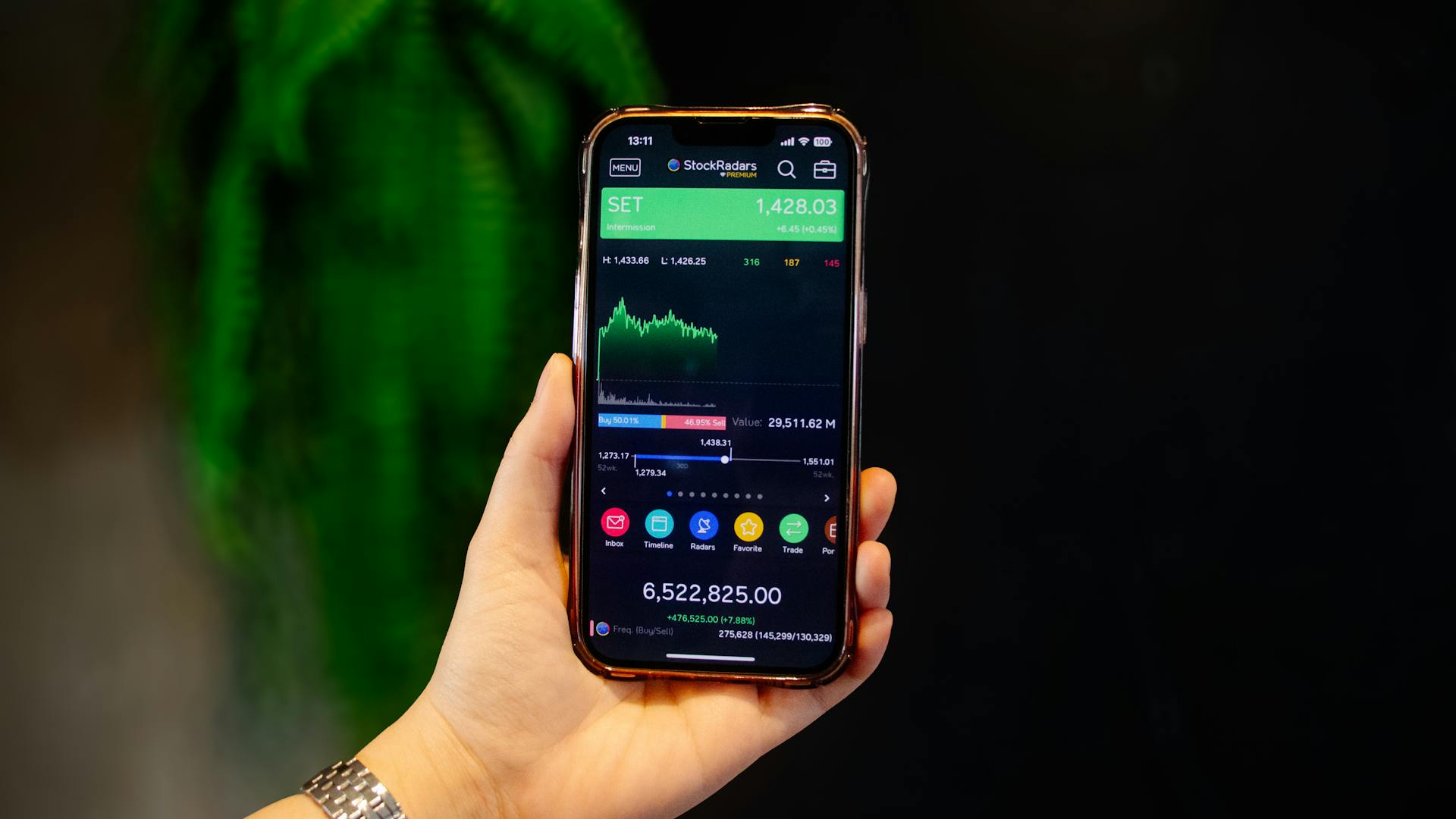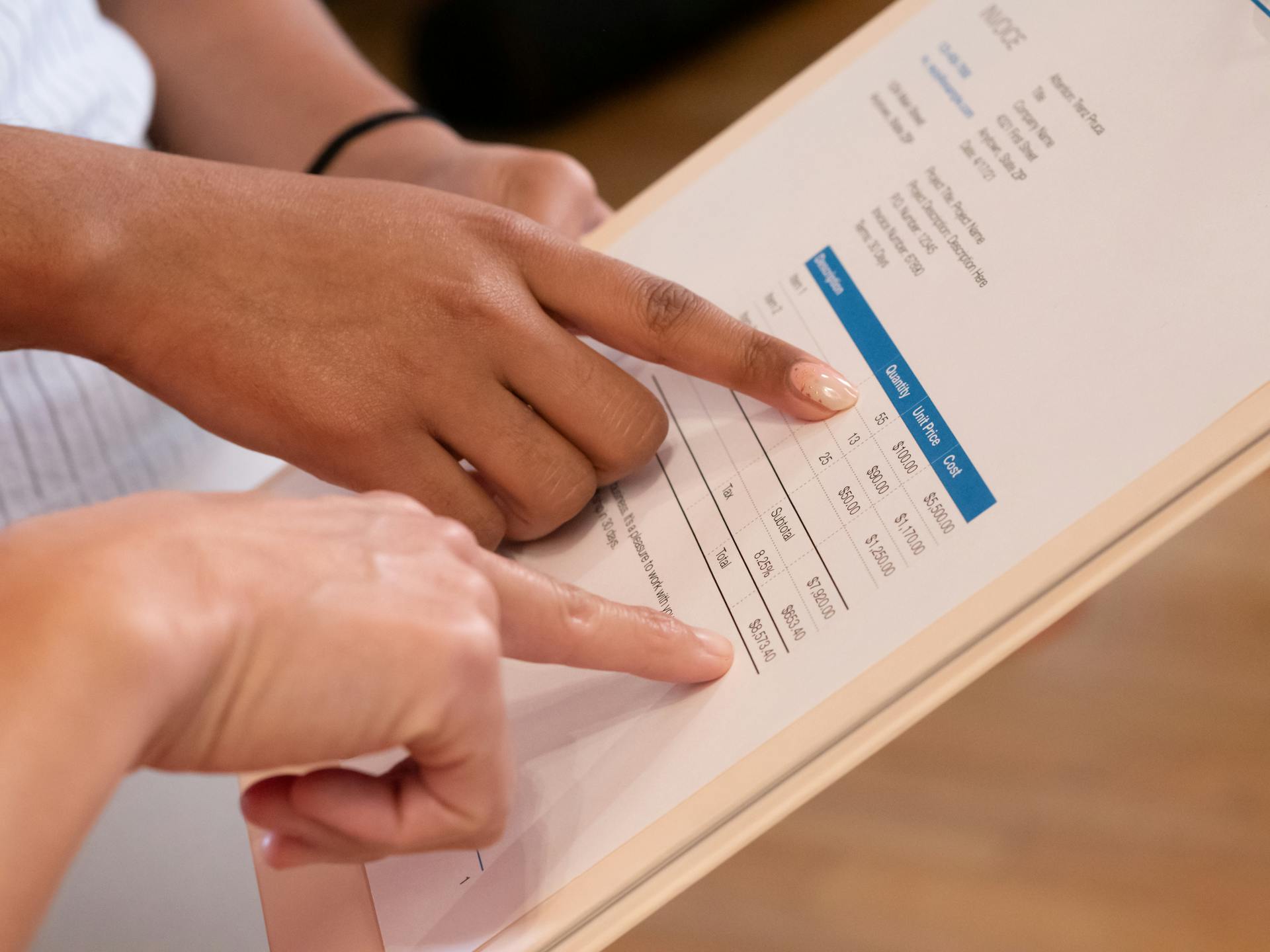
As a day trader, your day starts early, around 4 or 5 am, to stay ahead of the market.
You'll likely begin by reviewing market news and trends, which can be found on financial websites and apps, such as Bloomberg or CNBC.
A typical day trader spends most of their time in front of a computer screen, constantly monitoring stock prices and making quick decisions to buy or sell.
The goal is to make a profit by buying low and selling high, often within a matter of minutes or hours.
Morning Routine
A morning routine is crucial for day traders, and it's not just about waking up early. Most day traders wake up between 4:00 and 6:00 am to get a head start on the trading day.
A well-structured morning routine helps traders stay focused and alert. They typically spend 30 minutes to an hour reviewing market news and trends before the markets open.
Day traders often start their day by checking their trading accounts and analyzing their previous day's performance. This helps them identify areas for improvement and adjust their strategies accordingly.
A consistent morning routine also helps traders develop a sense of control and discipline, which is essential for navigating the fast-paced world of day trading.
Trading Basics
Day trading is the practice of buying and selling financial assets within the same trading day, aiming to capitalize on short-term price movements.
It requires a comprehensive understanding of market trends and the ability to analyze charts and data quickly. Day traders must also have the discipline to stick to a predefined trading strategy.
Successful day trading is not just about making trades, but making the right trades at the right time, based on thorough research and solid risk management practices.
A fresh viewpoint: Equity Market Making
Trading Session
A trading session is a specific period of time when a market is open for trading. This can be as short as a few minutes or as long as several hours.
The duration of a trading session can vary depending on the market and its location. For example, the New York Stock Exchange (NYSE) is open from 9:30 am to 4:00 pm ET, while the London Stock Exchange (LSE) is open from 8:00 am to 4:30 pm GMT.
Markets are typically closed on weekends and holidays, which can impact trading sessions. The NYSE is closed on Sundays and on certain holidays, such as Christmas Day and New Year's Day.
Understanding the trading session is crucial for traders as it affects the timing of trades and market volatility. A trader needs to know when the market is open and when it's closed to make informed decisions.
The trading session can be divided into different segments, such as the opening session, peak session, and closing session. Each segment has its own characteristics and trading dynamics.
If this caught your attention, see: Sentinel One Stock Symbol
What Is Trading?
Trading is a way to buy and sell financial assets, like stocks or forex, with the goal of making a profit from short-term price movements.
Day trading is a specific type of trading where positions are closed before the market closes to avoid overnight risk.
It involves understanding market trends and analyzing charts and data quickly to make informed trades.
Successful trading is not just about making trades, but also about making the right trades at the right time, based on thorough research and solid risk management practices.
Day traders use techniques like scalping and range trading to generate profits from small price changes.
They also use financial leverage, margin trading, and short-selling to amplify their potential returns, although these practices increase the risks.
Day traders need access to sophisticated trading software and real-time market data to make informed decisions.
Understanding the nuances of different markets, from stocks to foreign exchange, is also crucial for success in trading.
For your interest: How to Get Stock Intraday Data
Trading Strategies
As a trader, having a solid trading strategy is crucial for success.
A key concept to understand is that trading strategies can be categorized into two main types: trend following and counter-trend trading.
The trend following strategy involves identifying the direction of the market and trading in the same direction.
For example, if the market is trending upwards, a trend follower would buy assets and hold onto them until the trend reverses.
Counter-trend trading, on the other hand, involves trading against the current trend in hopes of catching a reversal.
This strategy is riskier and requires a good understanding of market psychology and technical analysis.
Risk management is also essential in trading, and one way to do this is by setting stop-loss orders to limit potential losses.
A stop-loss order is an order to sell an asset when it falls to a certain price, thus limiting potential losses.
Another important aspect of trading strategies is position sizing, which involves determining the optimal amount of capital to allocate to each trade.
Position sizing helps to manage risk and maximize returns by ensuring that each trade is sized correctly.
A different take: Investor Relations Strategy
Frequently Asked Questions
How much money does an average day trader make?
According to Zipia, the average day trader makes around $116,000 per year, although some top performers at prop firms can earn significantly more, up to $178,000 annually.
Can you make $1000 a day trading stocks?
Yes, making $1000 a day trading stocks is possible with a strong work ethic and the right strategy. However, it requires knowledge of buying and selling stocks at the optimal time.
How many hours a day do day traders trade?
Most independent day traders work 2-5 hours per day, focusing on short sessions to maximize efficiency. They often start with simulated trades before moving to live trading.
Sources
Featured Images: pexels.com


